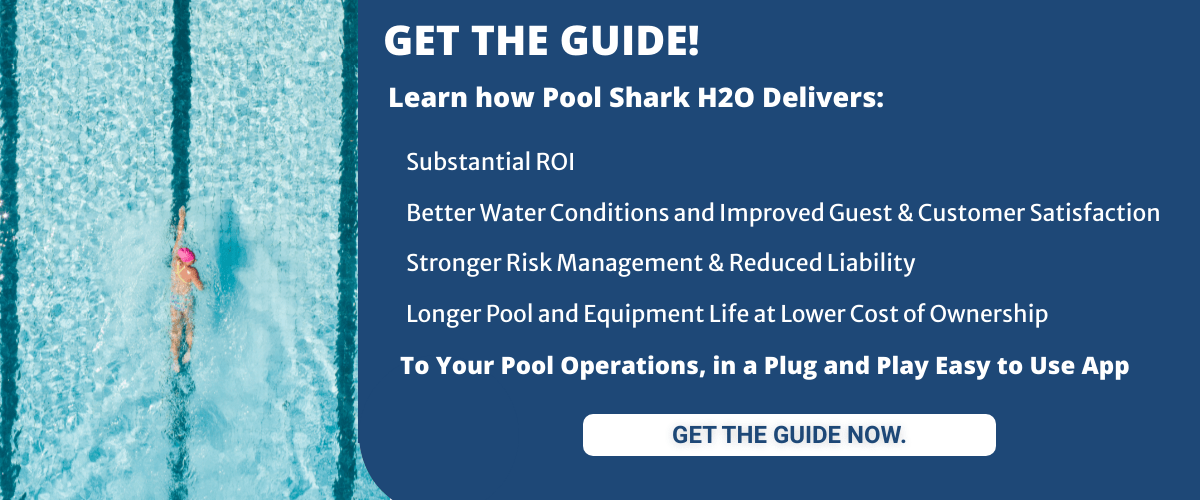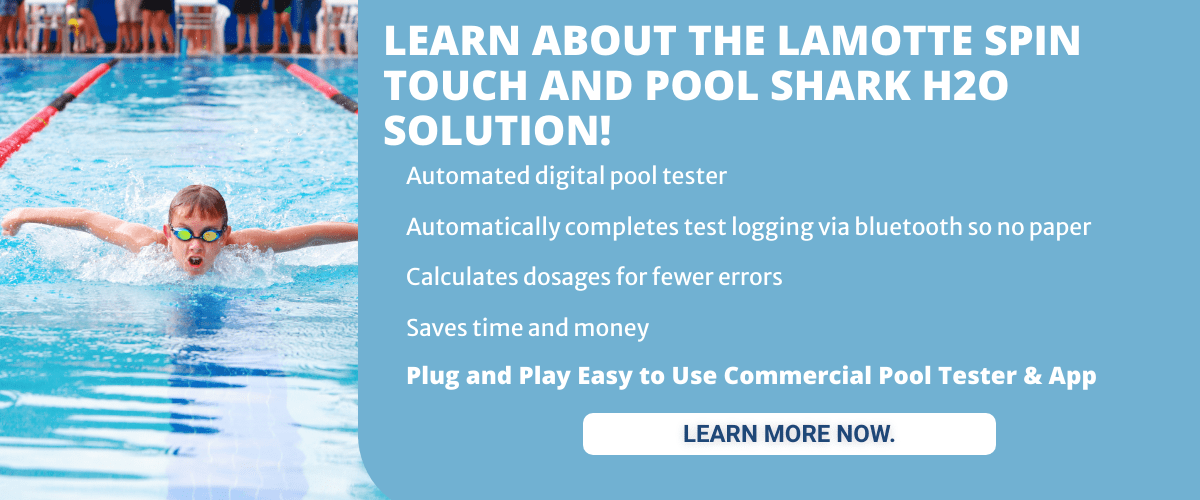Borax, also known as sodium borate, sodium tetraborate, and disodium tetraborate is a common and cheap household product that is known for its use as a cleaning agent. It comes in the form of a chalky, white powder, and is a type of borate that is sometimes used to assist in pool management and maintenance. Using borates in pools brings several benefits, including stabilizing pH levels, preventing algae growth, and decreasing the need to add chlorine as frequently. While Borax isn’t the ideal candidate for use in pools, using borates in pools is highly recommended.
What are Borates?
Borates are chemicals that buffer mostly against upward rises in pH, not locking pH in place, but making it far more difficult for the pH level to rise or fall. Using borates is very helpful for pool owners and operators who are struggling to keep pH levels stable. If pH levels get too high, the chlorine in the pool water doesn’t work as effectively as a disinfectant. Conversely, if pH levels are too low, the water’s acidity can cause skin and eye irritation, and can even damage pool equipment and the pool itself in extreme cases. If pH stays too low for too long, build-ups of lime can occur and some stone or concrete in the pool may slowly start dissolving. To avoid any of these issues, the ideal range to keep pool water pH at is 7.2-7.6, which borates can help maintain.
Alkalinity can also play a significant role in the pH level, as alkaline substances in water act as a buffer against pH levels decreasing in the water. The ideal alkalinity range to keep in pool water is 88-120 ppm, as in this range pH is usually stable and easy to maintain. Borates buffer against pH levels increasing which, when paired with alkalinity, makes for the ideal combination for pH stabilization. This is very helpful, as pH can otherwise fall out of balance quickly whenever something enters the pool, including swimmers, rain, leaves, insects and more.
Another benefit when using borates is that they don’t degrade. Many products with similar functions will evaporate after they’ve done their part, but borates like Borax will stay in the water and continue working. This means borates don’t need to be added as frequently as some alternatives, making them more cost-effective. Borates will still need to be topped off occasionally to maintain the desired level, as bathers using the pool and leaving and entering will cause drag out and splash out. This doesn’t occur frequently and won’t dramatically change borate levels when it does happen, but commercial pools can lose larger amounts of water during the backwash of their filters. Borate levels must be monitored and maintained to ensure they stay in the desired range. Unfortunately, similarly to high cyanuric acid or calcium levels in pool water, if borate levels in a pool get too high, the pool water will need to be emptied and replaced.
One major disadvantage of using Borax as a borate to add to pool water is its high pH level of 9.5. In theory, this means Borax can therefore be used to raise pH, but it is inadvisable to use it for this purpose. If Borax is used to raise borate levels in a pool, acids and pH decreasers like muriatic acid may be needed to keep a pool’s pH in line so that raising the borax level doesn’t then lead to pH issues.
Borates in Pools Also Help in Preventing Algae
Borates in pools are also useful as an algastat, helping to prevent algae growth. Unfortunately, they can’t kill algae already present but can keep more from appearing. Borates like Borax aren’t technically algaecides, but will effectively do the same thing. Borax removes most of the naturally occurring carbon dioxide from pool water, which doesn’t allow algae to grow and bloom as carbon dioxide is its primary food source during respiration. Additionally, when borates stabilize pH levels, this allows sanitizers like chlorine to do their jobs effectively, including preventing algae growth.
How to Use Borates in Pools
There are a couple of different options for pool owners and operators looking to add borates to their pools. The first, ideal option is to use a commercial product like Proteam Supreme, Bioguard Optimizer, or Natural Chemistry’s Foundation. These products are a blend of boric acid and sodium tetraborate and are the preferred way to add borates to pools. These products are convenient in several ways, as they’re more pH neutral than alternatives like Borax, meaning that less pH adjustment will be required after their use. Additionally, they don’t require as much product to be added to the pool to make the same adjustments as Borax.
The alternative option is using 20 Mule Team Borax alongside a pH decreaser. This isn’t ideal for pools and isn’t as efficient for several reasons. For one, a pH decreaser must be used, as Borax’s high pH will raise the pool’s pH levels if left unchecked. When adding the acid or pH decreaser, users must be sure to alternate between adding Borax and the decreaser, to build borates slowly while keeping pH in line. Another drawback to using Borax is that more Borax is needed to reach the same borate level that many other commercial options can reach. More Borax required also means more acid is required to balance out the pH. For example, in a 10000-gallon pool, 30 lbs of Borax and 2 gallons of acid are required to reach desired borate levels. This means Borax will both take longer to add to the pool, and the costs of both the Borax and the pH decreaser can add up quickly.
The ideal borate dosage in pools is considered to be between 30 and 50 ppm, but the maximum recommended level by the EPA and NSF International is 50 ppm. Many state health department codes echo this, dictating that 50 ppm is the maximum level allowed by law. Most state health departments also dictate that only chemicals certified to NSF60 (or NSF50 minimum in some cases) are acceptable for public pool use. To ensure that pools stay within the ideal range but also under the legal limits, CPOs must be sure to use borate test kits to monitor their levels. It is considered best practice to test chemical levels whenever adding chemicals to pool water, not only for commercial pools, but for residential pools as well.
Borates in pool water don’t come without some drawbacks, however. Some drinking water studies suggest that ingesting high levels of borates can cause reproductive issues in animals. Thankfully, borate products aren’t dangerous for this reason in moderation, and it’s worth noting that every chemical used in pools has a maximum acceptable level for safety purposes. Humans are also advised to avoid ingesting large amounts of borates, but 50 ppm in a swimming pool is considered a fairly safe “in moderation” borate level, especially considering the fact that most humans don’t drink large amounts of pool water.
Testing and Monitoring Borate Levels in Commercial Swimming Pools
When using boric acid products or Borax, testing the levels of borates present in pool water using a test kit should be done monthly or as needed to maintain a level of 30-50 ppm of borates in the water. Regular testing will not only keep borate levels stable, but the borates will keep pH in the proper range as well, preventing issues with high and low pH levels.
The best way to keep track of chemical levels and pool conditions including borates and pH is by using the Pool Shark H2O app. Pool Shark H2O replaces physical pool water testing data logs, storing testing data in a secure cloud database instead of on paper. A digital solution to storing pool water testing data is beneficial in a multitude of ways, including that it protects the data from being tampered with, damaged, lost or destroyed. Storing the data in an online database also allows pool operators to view the latest testing results from pools they oversee from anywhere with an internet connection. Pool water testing data is required to be stored for seven years, which can take up a lot of space on-site if using physical pool logbooks. With the Pool Shark H2O app, every logbook fits in your pocket and can be viewed from anywhere with an internet connection.
Best of all, Pool Shark H2O uses the logged data on the app to automatically calculate how much of each chemical needs to be added for the user to make corrections to the chemical levels. Automating the calculation process can both increase accuracy and speed up the testing and correction processes. By taking the difficult and error-prone calculations out of the hands of employees, more accurate chemical corrections will be made, leading to chemicals like borates in pools staying in better balance.
Using borates in your pool can be quite beneficial, and can save time, money and effort by keeping pH levels more stable, and keeping pool water cleaner as a result. While using borates may be the right choice, pool owners and operators must ensure that they stay within the ideal range while also staying below regulated limits. To keep track of chemical levels like borates and many more, using the Pool Shark H2O app is the best tool for the job.
More Commercial Pool Chemistry Resources
Free, vs Combined vs Total Chlorine - A Guide for Commercial or Public Pool Operators
Chlorine Shock vs Non-Chlorine Swimming Pool Shock
Why Being Able to Calculate the Volume of a Commercial or Public Swimming Pool is Important
Cyanuric Acid Levels in Swimming Pools
Ideal Alkalinity in Commercial Pools
Managing pH and Alkalinity in Pools
Commercial Pool Chlorine Management
Cyanuric Acid in Your Pool Too High? How to Remove Cyanuric Acid (Lower Pool Stabilizer)
Lowering Alkalinity in Swimming Pools
Reasons Your Public or Commercial Pool Water Could Be Cloudy
Muriatic Acid in Swimming Pools
How to Lower pH in Pools, Water Parks and Water Features
Does Chlorine Kill Poop in a Swimming Pool?
Total Dissolved Solids: When Should I Drain My Pool?
Why Pool Chemical Storage Cabinets are Important for Commercial Pools
Storing Pool Chemicals: What Commercial Pool Operators Need to Know




